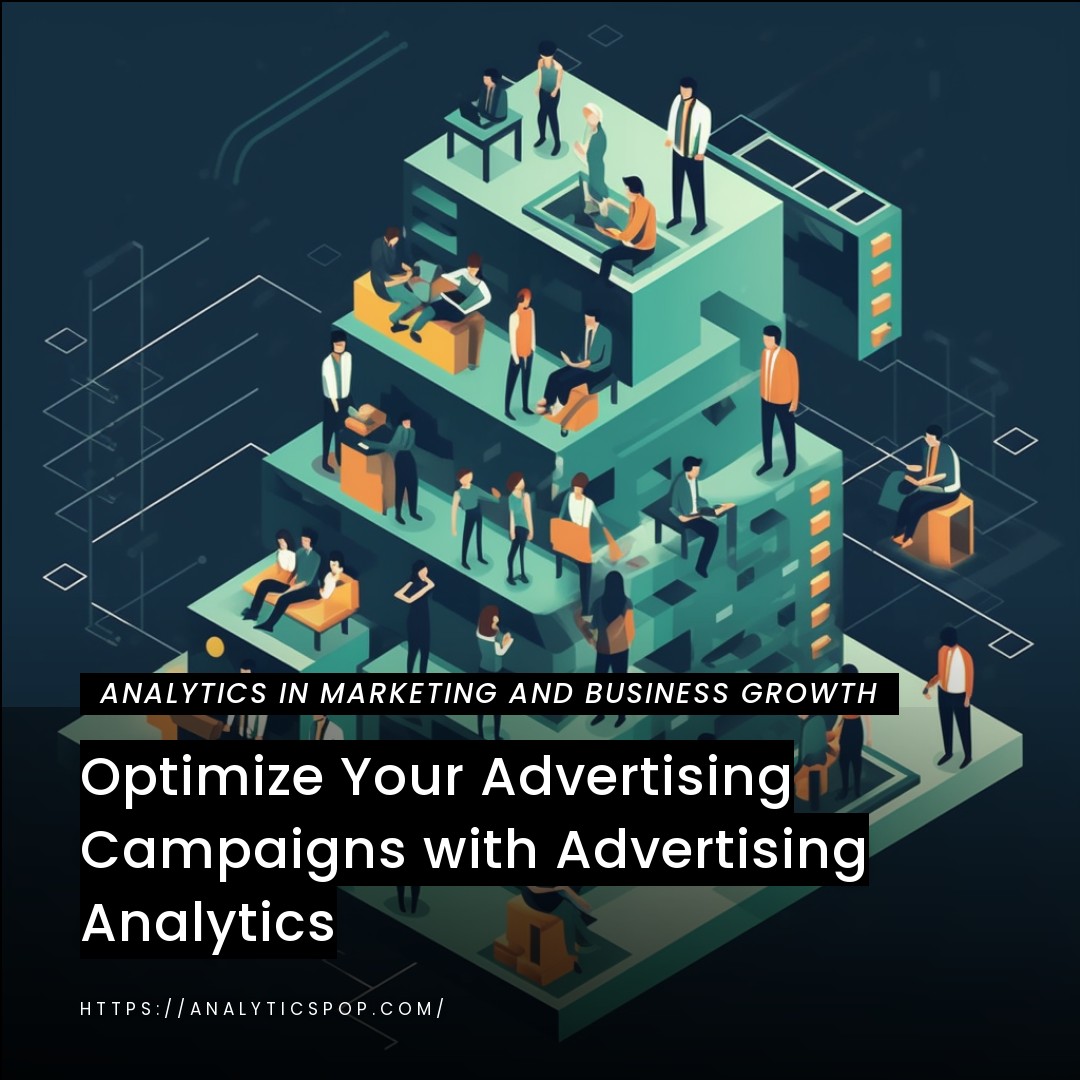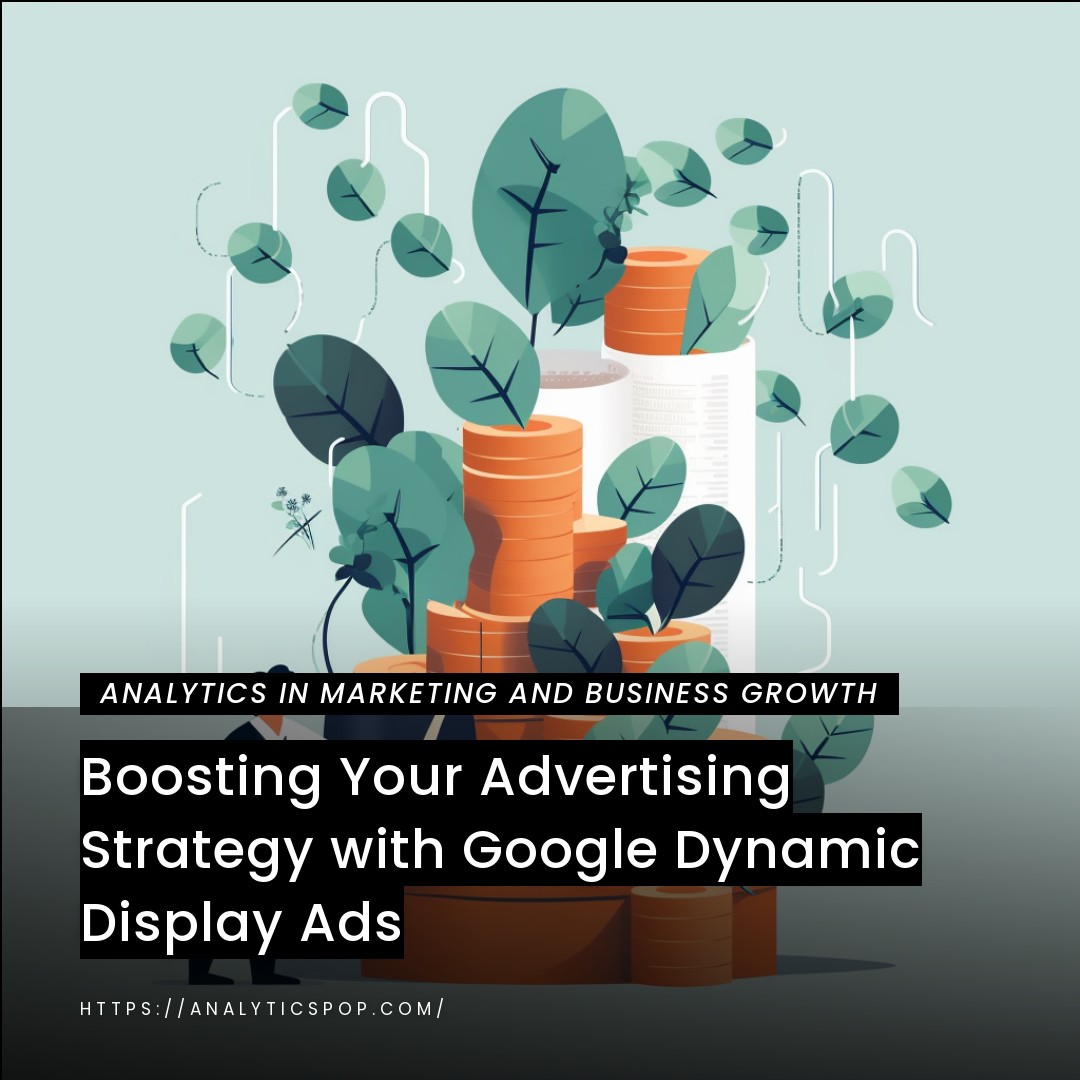Advertising analytics is essential for businesses looking to optimize their advertising campaigns.
Businesses can make informed decisions about their advertising strategies and improve their ROI by using data-driven insights. For example, companies can identify their most profitable customer segments by analyzing customer data and tailoring their ads accordingly.
They can also use data to track the performance of their ads and make adjustments as needed. In addition, advertising analytics can help businesses measure their campaigns’ effectiveness and identify improvement areas.
By leveraging the power of data, businesses can gain a competitive edge in the crowded advertising landscape and drive better results from their advertising spend.
What is advertising analytics?
Advertising analytics is the process of using data to analyze, measure and optimize advertising campaigns. It involves collecting and analyzing data from various sources such as ad servers, social media platforms, website analytics, and customer behavior to gain insights into the effectiveness of an advertising campaign.
Advertising analytics can help businesses identify the most effective channels and ad formats and target the right audience for their campaigns. Companies can make data-driven decisions about their advertising strategies to improve their return on investment (ROI) by analyzing click-through rates, conversion rates, and customer engagement.
In short, advertising analytics is the key to unlocking the full potential of a company’s advertising campaigns by making informed decisions based on accurate data.
Why use advertising analytics?
There are several compelling reasons for businesses to use advertising analytics.
- First and foremost, advertising analytics provides valuable insights into the performance of advertising campaigns, enabling businesses to optimize their ad spend and improve their ROI.
By analyzing data such as customer behavior, engagement rates, and conversion rates, businesses can gain a deeper understanding of their target audience and preferences, allowing them to create more effective and personalized advertising campaigns. - Additionally, advertising analytics helps businesses to identify which advertising channels and formats are most effective, which helps to reduce wasted ad spend and improve the efficiency of their campaigns.
By leveraging data-driven insights, businesses can gain a competitive edge in the crowded advertising landscape and drive better results from their advertising spend.
Ultimately, advertising analytics is essential for any business looking to maximize the impact of its advertising campaigns and achieve long-term success.

Overview of advertising analytics capabilities
Advertising analytics gives businesses a wide range of capabilities to measure and optimize their advertising campaigns. These capabilities include:
- Data collection: Advertising analytics enables businesses to collect data from various sources such as ad servers, social media platforms, website analytics, and customer behavior.
- Performance tracking: With advertising analytics, businesses can track the performance of their campaigns in real time, including metrics such as impressions, click-through rates, and conversion rates.
- Audience segmentation: Businesses can identify their most profitable customer segments by analyzing customer data and tailoring ads accordingly.
- Channel optimization: Advertising analytics helps businesses identify the most effective advertising channels and formats, reducing wasted ad spend and improving their campaigns’ efficiency.
- Predictive modeling: By using predictive modeling techniques, advertising analytics can help businesses forecast the performance of their campaigns and make data-driven decisions about their advertising strategies.
- A/B testing: Advertising analytics enables businesses to test different ad variations and determine which ad performs best.
- Attribution modeling: Advertising analytics can help businesses determine the impact of each advertising channel on customer behavior, allowing them to allocate their advertising spending more effectively.
Advertising analytics provides businesses with a robust set of tools to measure, optimize, and improve the performance of their advertising campaigns.
Setting Up Advertising Analytics
To set up advertising analytics, businesses need access to data from various sources such as ad servers, social media platforms, website analytics, and customer behavior. This data must be collected and organized in a centralized location such as a data warehouse or marketing analytics platform.
Additionally, businesses need to clearly understand their advertising goals and objectives, as well as the key performance indicators (KPIs) they will use to measure the success of their campaigns.
To collect and analyze data effectively, businesses may also need to invest in specialized tools and technologies such as data visualization software, predictive analytics tools, and machine learning algorithms. Additionally, companies may need to hire a team of data analysts, marketing analysts, and advertising experts to manage and optimize their advertising campaigns.
Finally, it’s important to note that advertising analytics is an ongoing process that requires regular monitoring and optimization. Businesses should be prepared to adjust their advertising strategies and tactics based on the insights gained from their data analysis to improve their campaigns’ performance continually.
Key Performance Indicators (KPIs)
Key performance indicators (KPIs) are specific metrics used to measure the success of an advertising campaign. These metrics track progress toward specific goals and objectives and evaluate the effectiveness of different advertising channels, formats, and strategies.
In advertising analytics, KPIs can include a wide range of metrics such as impressions, clicks, click-through rates (CTR), conversion rates, cost per click (CPC), return on investment (ROI), and customer lifetime value (CLV).
The KPIs used in advertising analytics will vary depending on the specific goals and objectives of the advertising campaign. For example, if an advertising campaign aims to increase brand awareness, the KPIs might include metrics such as impressions and reach. If the goal is to drive sales, the KPIs might include conversion rates and ROI.
By tracking KPIs over time and comparing them across different advertising channels and formats, businesses can gain valuable insights into the performance of their advertising campaigns and make data-driven decisions about their advertising strategies.

Attribution and Segmentation
What is attribution modeling in advertising analytics?
Attribution modeling is the process of determining the impact of each advertising channel on customer behavior and conversion. In advertising analytics, attribution modeling helps businesses to understand which advertising channels and formats are most effective at driving conversions and revenue.
There are several different attribution models, including first touch, last touch, linear, time decay, and position-based. Each attribution model assigns different weights to different touchpoints in the customer journey, based on the assumption that different touchpoints have different levels of influence on the customer’s decision to convert.
By using attribution modeling, businesses can allocate their advertising spending more effectively, focusing on the channels and formats that significantly impact customer behavior and conversion.
Attribution modeling also helps businesses identify gaps and inefficiencies in their customer journey, allowing them to make data-driven decisions about optimizing their advertising campaigns and improving the overall customer experience.
What is audience segmentation in advertising analytics?
Audience segmentation divides a target audience into smaller groups based on shared characteristics or behaviors. In advertising analytics, audience segmentation is used to identify the most profitable customer segments and create more targeted and personalized advertising campaigns.
There are many different ways to segment an audience, including demographic factors such as age, gender, and location, as well as behavioral factors such as interests, purchase history, and engagement with previous advertising campaigns.
By using audience segmentation, businesses can create more relevant and engaging advertising campaigns that speak directly to the needs and interests of their target audience. Audience segmentation also helps firms allocate their advertising spending more effectively by focusing on the customer segments most likely to convert and generate revenue.
Ad Creatives and Messaging
How can advertising analytics be used to optimize ad creatives and messaging?
Advertising analytics can optimize ad creatives and messaging in several ways. By analyzing customer behavior and engagement with previous advertising campaigns, businesses can gain insights into the types of ad creatives and messaging that are most effective at capturing the attention of their target audience and driving conversions.
- One way to optimize ad creatives and messaging is through A/B testing. By testing different ad creatives and messaging variations and comparing their performance, businesses can identify the most effective combinations and make data-driven decisions about their advertising strategies.
- Advertising analytics can also optimize ad creatives and messaging based on audience segmentation. By tailoring ad creatives and messaging to specific audience segments based on their interests, purchase history, and engagement with previous advertising campaigns, businesses can create more relevant and personalized advertising campaigns that are more likely to drive conversions.
- Finally, advertising analytics can be used to optimize ad creatives and messaging based on the specific goals and objectives of the advertising campaign. For example, if an advertising campaign aims to increase brand awareness, businesses may focus on creating visually appealing and memorable ad creatives.
If the goal is to drive sales, businesses may create ad creatives and messaging emphasizing discounts or promotions.
In short, advertising analytics provides businesses with valuable insights into customer behavior and preferences, which can be used to optimize ad creatives and messaging and drive better results from their advertising campaigns.
Targeting
How can advertising analytics be used to optimize targeting in advertising campaigns?
Advertising analytics can optimize targeting in advertising campaigns in several ways. Businesses can identify the most profitable customer segments by analyzing customer data and targeting their advertising campaigns accordingly. Advertising analytics can optimize targeting in advertising campaigns in several ways.
- One way to optimize targeting is through lookalike modeling. Lookalike modeling uses data analysis to identify customers who share similar characteristics and behaviors with existing customers. By targeting these lookalike audiences, businesses can expand their reach and target new customers more likely to convert.
- Advertising analytics can also optimize targeting based on geographic and demographic factors. Targeting specific locations and demographic groups based on customer data allows businesses to create more relevant and personalized advertising campaigns that are more likely to drive conversions.
- Finally, advertising analytics can be used to optimize targeting based on the specific goals and objectives of the advertising campaign. For example, if an advertising campaign aims to increase brand awareness, businesses may focus on targeting a broad audience to increase visibility. If the goal is to drive sales, companies may target specific customer segments based on their likelihood to convert.
In short, advertising analytics provides businesses with valuable insights into customer behavior and preferences, which can be used to optimize targeting and drive better results from their advertising campaigns.

Action Plan
What is an action plan in advertising analytics?
An action plan in advertising analytics is a plan for optimizing advertising campaigns based on data-driven insights. The action plan outlines specific steps and strategies for improving the performance of advertising campaigns and achieving particular goals and objectives.
The action plan typically includes a review of the current advertising campaigns, identifying improvement areas, and specific optimization recommendations based on data analysis. The program may also include a timeline for implementing the recommended changes and a method for measuring the success of the changes.
A practical action plan in advertising analytics is a dynamic document updated regularly based on ongoing data analysis results. The program should be flexible and adaptable, allowing businesses to adjust their advertising strategies and tactics based on changing market conditions and customer behavior.
In short, an action plan in advertising analytics is a roadmap for optimizing advertising campaigns and driving better results through data-driven insights and strategies.
Final Thoughts
Advertising analytics is a powerful tool for businesses looking to optimize their advertising campaigns and drive better results. By collecting and analyzing data from various sources such as ad servers, social media platforms, website analytics, and customer behavior, businesses can gain valuable insights into the performance of their advertising campaigns and make data-driven decisions about their advertising strategies.
Advertising analytics provides businesses various capabilities, including performance tracking, audience segmentation, attribution modeling, and targeting optimization. By leveraging these capabilities, companies can create more relevant and personalized advertising campaigns, allocate their spending more effectively, and achieve specific goals and objectives.
Finally, it’s important to note that advertising analytics is an ongoing process that requires regular monitoring and optimization. Businesses should be prepared to adjust their advertising strategies and tactics based on the insights gained from their data analysis to improve their campaigns’ performance continually.
With the right approach and tools, advertising analytics can help businesses gain a competitive edge in the crowded advertising landscape and achieve long-term success.



